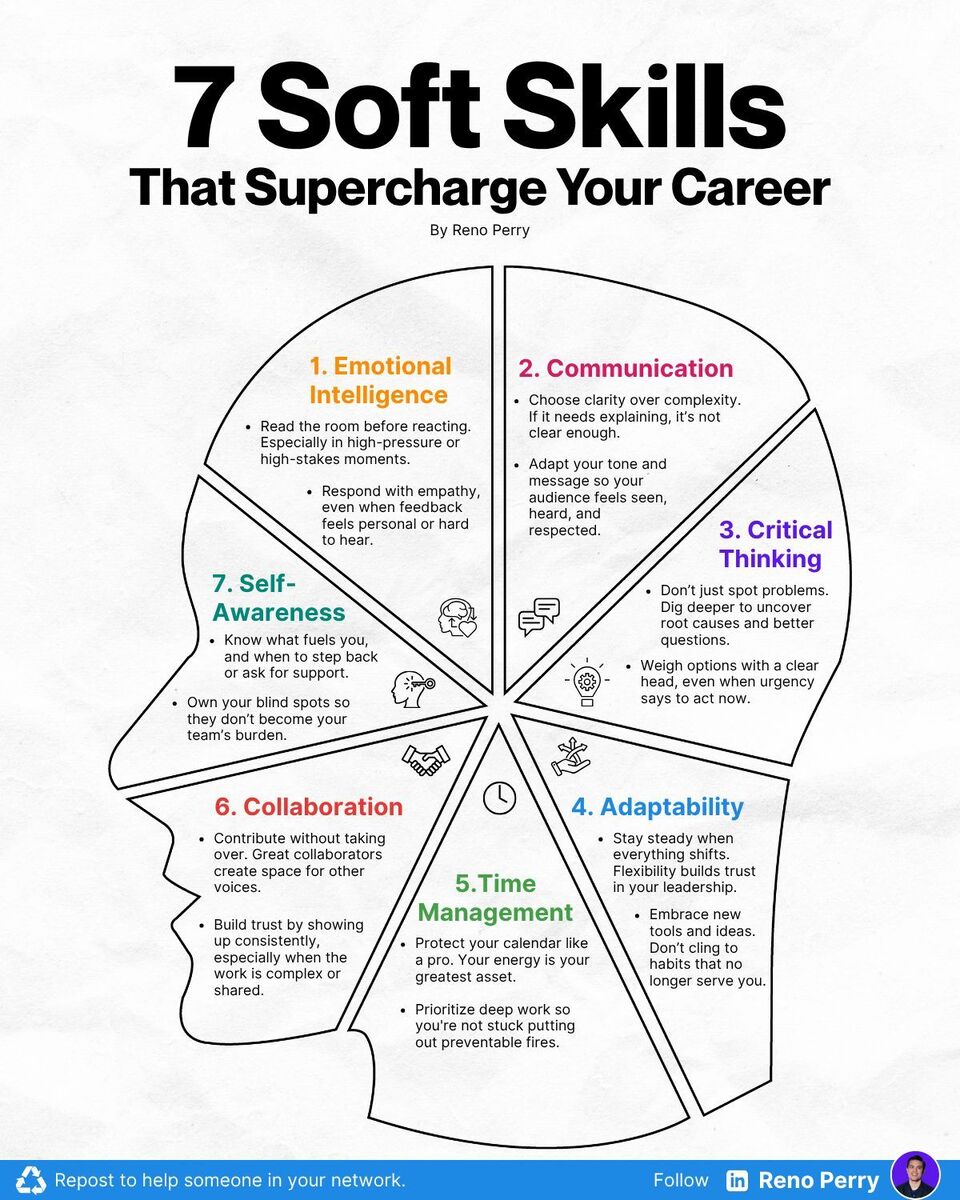-

CCLAC SONORA-ARIZONA
- 1
- 98
- 0
- 0
-

CCLAC SONORA-ARIZONA
- 0
- 112
- 1
PABlo is friends with Cathy Lolwing
Ana Amalia Bringas Icedo is friends with PABlo
Not temperature – personality.“Coolness,” in the cultural sense, may seem effortless, but University of Arizona marketing professor Caleb Warren says it’s actually shaped by a distinct and surprisingly universal set of traits.
In a global study of 5,000+ people across 12 countries, Warren and his team found that “cool” individuals are consistently described as extroverted, hedonistic, powerful, adventurous, open, and autonomous. While often admired, coolness isn’t the same as goodness – in fact, the two reflect different values.Warren’s research offers fresh insight into how we perceive identity and influence, with takeaways that extend far beyond marketing.
Source:
www.linkedin.com/pulse/1m-veterinary-stu...personalities-kcqac/
Read More...
25 Grant Opportunities with Rolling Deadlines for Nonprofits1. Youth Empowerment Funding
Nonprofit organizations in the U.S. can apply for up to $15,000 to support programs that uplift and enrich children's lives. These initiatives may focus on education, wellness, and holistic development. [Learn more]2. Animal Welfare Mini-Grants
Grants of up to $1,000 are available for small animal-focused nonprofits, especially those run by volunteers. Funding can support veterinary needs, pet food, training, and spay/neuter clinics. [More info]3. Community Well-Being Initiatives Grant
Funding is available for U.S. nonprofits working to improve housing, water access, economic development, and skilled trades. Projects should address real community challenges with hands-on solutions. [Find out more]4. Sustainability & Workforce Grant
Support is offered for programs that combine environmental care, sustainable agriculture, and workforce development. Educational and community-led initiatives are encouraged. [Read details]5. Family Safety and Advocacy Grant
Nonprofits addressing domestic abuse, sexual assault, trafficking, or child welfare—particularly for those in foster systems—can receive funding to aid prevention, recovery, and family support services. [More here]6. Veteran and Military Family Services Grant
Organizations serving active military members, veterans, and their families can seek support for health-related and barrier-reducing programs, especially those that are inclusive and evidence-based. [Explore further]7. Social Justice Support for BIPOC-Led Groups
This grant backs organizations led by Black, Indigenous, and People of Color that are leading systemic change, advocacy, and grassroots organizing to build equitable communities. [Click here for info]8. Arts, Children, Health & Education Grant
Funding is available for U.S. nonprofits running programs in the arts, child development, education, and healthcare. Priorities are periodically updated based on community needs. [Learn more]9. Local Impact Education & Disability Grant
Grants of up to $25,000 are available for nonprofits improving education access, independent living, and community resilience. Funding may support programmatic or operational costs. [More information]10. Global Sustainability and Social Outreach Grant
Nonprofits in North America and beyond may apply for support to promote environmental conservation and social equity, especially for communities facing illness or hardship. [Find details]11. Outdoor Event & Infrastructure Grant
Grants up to $20,000 plus in-kind rentals are available to support outdoor initiatives that serve vulnerable populations. Projects must incorporate equipment rentals to qualify. [Read more]12. Adult Learning & Digital Literacy Grant
Funding supports adult literacy initiatives, particularly those offering online education. Programs must include regular learner engagement through digital platforms. [Discover more]13. Agriculture and Nutrition Education Funding
Grants support U.S. nonprofits promoting regenerative farming and nutrition awareness. Funding is flexible and can be applied to annual, capital, or special programs. [Learn more]14. Rural Housing Self-Help Grant
Funding assists organizations helping low-income families in rural areas to construct affordable homes. Support includes training, technical aid, and family recruitment. [More info]15. Disability, Senior & Mental Health Program Support
This grant assists projects that empower individuals with disabilities, veterans, or seniors, and those addressing mental health, substance use, or youth suicide prevention. [Get more information]16. Capacity Building for Families & Children
Nonprofits enhancing the lives of children and families through education, recreation, and the arts are eligible for funding that can support programs, staff, or operations. [Click here to learn more]17. General Operating Support for Nonprofits
This flexible grant helps sustain the work of established U.S. nonprofits with proven community impact. Funds can support day-to-day operations and infrastructure. [More details]18. Multi-Sectoral Support Grant (Education, Health, Recreation, Faith)
Funding is available for diverse nonprofit initiatives that enrich lives through improved education, youth activities, healthcare, or faith-based community wellness. [Read more here]19. Services for Underserved Populations Grant
Nonprofits working to meet basic needs in education, housing, nutrition, or wellness for disadvantaged individuals can apply for funding to help bridge access gaps. [Learn more]20. Community Strength & Social Services Grant
This grant supports programs ranging from social services to medical research and cultural projects, with an emphasis on community enhancement and engagement. [Explore grant info]21. Comprehensive Service Programs Grant
Funding is available for a wide array of community services such as shelters, food assistance, veteran support, and ethical animal welfare programs. [Details here]22. Community Capital & Operational Grant
Nonprofits addressing social or environmental challenges, especially those helping children, women, or animals, may apply for support covering capital and operating expenses. [More info]23. Micro-Grant for Mental Health & Connection Projects
Grants of $1,000 are offered for grassroots efforts that boost mental health, youth engagement, and social connectedness, including arts programs and community cleanups. [Click to learn more]24. Agriculture, Food Justice & Waste Reduction Grant
Nonprofits may apply for up to $10,000 to increase food access, support sustainable farming, and reduce food waste—particularly through youth-focused leadership programs. [Read full grant info]25. Broad-Based Community Impact Grant
Funding is available for projects with widespread benefits in healthcare, education, veteran support, and crisis services—favoring initiatives that serve entire communities. [Find more here]
Read More...
Privacy Badger from EFF
Privacy Badger
is an install-and-forget browser add-on that stops advertisers and trackers from secretly tracking where you go and what pages you look at on the web. If an advertiser or other third party seems to be tracking you across multiple websites without your permission, Privacy Badger automatically blocks them from loading any more content in your browser.
eff.org/pages/privacy-badger
Read More...
Misinformation. Fake News. False Viral Claims. Distortions of Facts.
Social Media Memes.
And now we have AI that can fabricate fictions or hallucinations which might include shoddy, error-filled or misleading reporting of "news" that you might want to be skeptical about until you can FACT CHECK it!
Read More...
Hola como esta
ISELA HONG BELTZ is friends with Ana Amalia Bringas Icedo
ISELA HONG BELTZ is friends with Mike Rohrbach
ISELA HONG BELTZ is friends with PABlo
The successful orchestration of a perfect UI/UX Design always comes down to a set of inescapable questions. Such as:
1. Who is the audience? Who is the website or app being designed for?
The entire population of planet earth can not be the target audience. That’s absurd.
There is only a subset of that large population which the app or website, should aim to satisfy. That subset is the target audience.
Every design, right from the birthing or idea forming stage, has a purpose. That purpose is for it to reach the intended audience.
For good UI/UX design, it’s important to get a good idea of who the target audience is. And what is of great value to them, as well.
Because it will help in getting a better view of the market, how to go about the design process, and also, where to start from.
One other thing that's important to remember or keep in mind is that UX Design holds the power of visual interpretation. The UX design is at the forefront of whatever the audience sees, the moment they click on that link to a site or open that mobile application.
So, to positively increase the effect of the designs on users, it's necessary to ensure that this bit of knowledge is used to the utmost advantage. It’s only when the audience is identified and understood that the UI/UX design can begin to be designed for that audience. And how?
2. By thinking like the audience.
Crazy, right?
But every designer is no different from the average user.
What separates the UX designer's principles and ideas from the users is, as mentioned earlier, the power of visual interpretation. So UI or UX designers, should be thinking like a user.
So that in the course of designing, It's important for UX designers to try to be as relatable to the user as possible, putting themselves in the shoes of the intended users and asking what they will interact with. As well as trying to get a good feel of their response to the interactive process.
And so, it’s not always about poring over stats and analyzing numbers or ratings, but figuring out how the UX design can address problems and challenges faced by the audience with a design.
Designing with the mind of a user is all core to the research part of UI/UX Design, because if the UX designer can not be emphatic, or even bring themselves to feel, even in the slightest, what the users are feeling when they interact with what's being created, then it’s all as good as pointless.
Now, let’s move on to not just what's important in creating a design, but also creating a responsive design.
3. Creating responsive design.
It all starts with a test run. Nobody builds up a car and immediately delivers it to the hand of the market without test driving it first.
Doing that is undoubtedly a recipe for disaster. Think of the car crashes and bad reviews and the many other worse things that could follow.
You can only imagine how drastic a bad UI/UX design will look. To positively enhance user experience, a good designer should always ensure to perform a user-interface testing for testing UI/UX design.
This is to make sure that the UI not only just functions, but does so properly, and to fish out any kind of hidden defect. It would also involve checking through the various design elements like the controls; menu bars, tool bars, fonts, you name it.
A good UI/UX designer can even perform what is known as interface prototyping.
Interface Prototyping is one way for a designer to create a test version of the main concept. Like say a crash version of a favorite exercise app or shopping app, for example.
It presents it in such a way that everyone who has their hands involved in the project can give their honest feedback about it and then whatever necessary adjustments that need to be made before the final version is released can be done.
As ridiculous as it may sound, Interface Prototyping gives the UX Designer the freedom to fail as fast as they can. To correct their mistakes in time before releasing the final version of the design.
What is most important to UI/UX Design?
Perhaps the most important factor to consider in UI/UX Design is that every designer has the power to think and choreograph the interactions people have with a products and services, wide across countless channels and platforms.
But the real trick to a successful design doesn’t just lie in making it as colorful or as eye-catching as possible. Or making sure buttons are in the right places.
It is about designing in such a way that whatever is being created is of great benefit to the people that use it.
Read More...


















